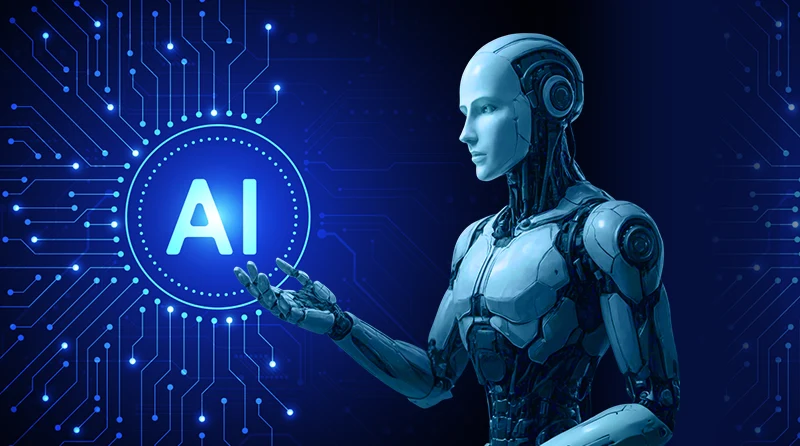Artificial Intelligence (AI) is reshaping how the world lives, learns, and works. From virtual assistants like Siri and Alexa to complex systems that analyse medical data or drive cars, AI is now at the centre of modern innovation.
But for beginners, the concept of AI can feel complex or abstract. What exactly is artificial intelligence? How does it work? And why is it such a big deal today?
This ultimate beginner’s guide breaks everything down in clear, simple terms, explaining how AI functions, where it’s used, and why it matters more than ever.
What Is Artificial Intelligence (AI)?
Artificial Intelligence (AI) refers to the simulation of human intelligence in machines that are designed to think, learn, and make decisions like humans. In simpler terms, AI enables computers to perform tasks that usually require human reasoning, such as recognising speech, solving problems, or understanding language.
Over the decades, AI has evolved from simple rule-based systems into complex learning models capable of self-improvement. Today, AI powers everyday tools, from Google search and Netflix recommendations to chatbots, self-driving cars, and healthcare diagnostics.
How Does Artificial Intelligence Work?
AI works by combining data, algorithms, and computing power to mimic human thinking. It analyses vast amounts of data, learns patterns from it, and then makes predictions or decisions based on that knowledge.
Here’s a breakdown of the main techniques that make AI work:
1. Machine Learning (ML)
Machine Learning is a subset of AI that enables systems to learn from data without being explicitly programmed. The system analyses data, identifies patterns, and improves its performance over time.
For example, a spam filter learns to recognise unwanted emails based on patterns from millions of previous messages.
2. Deep Learning
Deep Learning is a more advanced form of machine learning that uses artificial neural networks; systems inspired by the human brain. It processes information through multiple layers to recognise images, voices, or even emotions.
This is the technology behind facial recognition, voice assistants, and self-driving cars.
3. Natural Language Processing (NLP)
NLP allows computers to understand and respond to human language. It’s what powers tools like ChatGPT, translation apps, and digital assistants. NLP analyses text, understands intent, and generates meaningful responses.
4. Computer Vision
Computer Vision enables machines to interpret and understand images and videos. It’s used in facial recognition, medical imaging, traffic management, and quality inspection in manufacturing.
Key Components of AI Systems
To understand how AI works, it helps to look at its core components:
- Data: The raw material for AI. The more quality data a system has, the more accurate it becomes.
- Algorithms: The rules and processes that help AI systems learn from data.
- Training and Feedback: AI improves through repetition and feedback, similar to how humans learn.
- Computing Power: High-performance processors and cloud infrastructure enable AI to process massive datasets quickly.
Types of Artificial Intelligence
AI systems can be classified based on their capabilities:
- Narrow AI (Weak AI): This type of AI performs specific tasks, such as chatbots, language translation, or recommendation systems. It’s the most common form of AI today.
- General AI (Strong AI): A theoretical form of AI that can perform any intellectual task a human can. It would have genuine reasoning and self-awareness, something scientists are still working towards.
- Superintelligent AI: This represents a future stage where machines surpass human intelligence entirely. While still hypothetical, it’s a major topic in discussions about AI safety and ethics.
How to Get Started with AI
For beginners, there are several ways to explore AI:
- Take free online courses from platforms like Google AI, Coursera, or Udemy.
- Experiment with AI tools such as Gemini, ChatGPT, or Claude.
- Join AI communities, webinars, or coding bootcamps.
- Follow AI research updates and ethical discussions.
The key is consistent learning, the more you explore, the more intuitive AI becomes.
Benefits of Artificial Intelligence
AI offers immense benefits across all sectors:
- Efficiency: Automates repetitive tasks, saving time and resources.
- Accuracy: Reduces human error and improves decision-making.
- Cost Reduction: Lowers operational costs through automation.
- Data Insights: Analyses large datasets to uncover valuable trends.
- Innovation: Drives creativity and new product development.
Challenges and Ethical Concerns
Despite its benefits, AI also raises serious challenges:
- Job Displacement: Automation could replace certain human roles.
- Bias and Fairness: AI systems can inherit biases present in data.
- Privacy Risks: Massive data collection can threaten personal privacy.
- Lack of Regulation: The fast pace of AI innovation outpaces existing laws.
- Ethical Dilemmas: Decisions made by AI in areas like law enforcement or healthcare require moral scrutiny.
Frequently Asked Questions on Artificial Intelligence
What is Artificial Intelligence (AI) in simple terms?
Artificial Intelligence refers to computer systems that can perform tasks that normally require human intelligence, such as understanding language, recognising patterns, solving problems, or making decisions. In essence, it allows machines to “think” and “learn” from data.
How does Artificial Intelligence actually work?
AI works by using algorithms and data to identify patterns, make predictions, and improve performance over time. Through techniques like machine learning and deep learning, AI systems analyse large datasets, learn from experience, and make smarter decisions automatically.
Where is AI used in everyday life?
AI powers many tools and services people use daily; from Google Search, Siri, and Netflix recommendations to facial recognition, online shopping suggestions, and digital assistants. It is also transforming industries such as healthcare, finance, agriculture, and education.
Is Artificial Intelligence safe?
AI is generally safe when used responsibly, but it raises concerns about privacy, data bias, and job automation. Governments, researchers, and technology companies are working to establish ethical standards and regulations to ensure AI is developed and applied safely and fairly.






